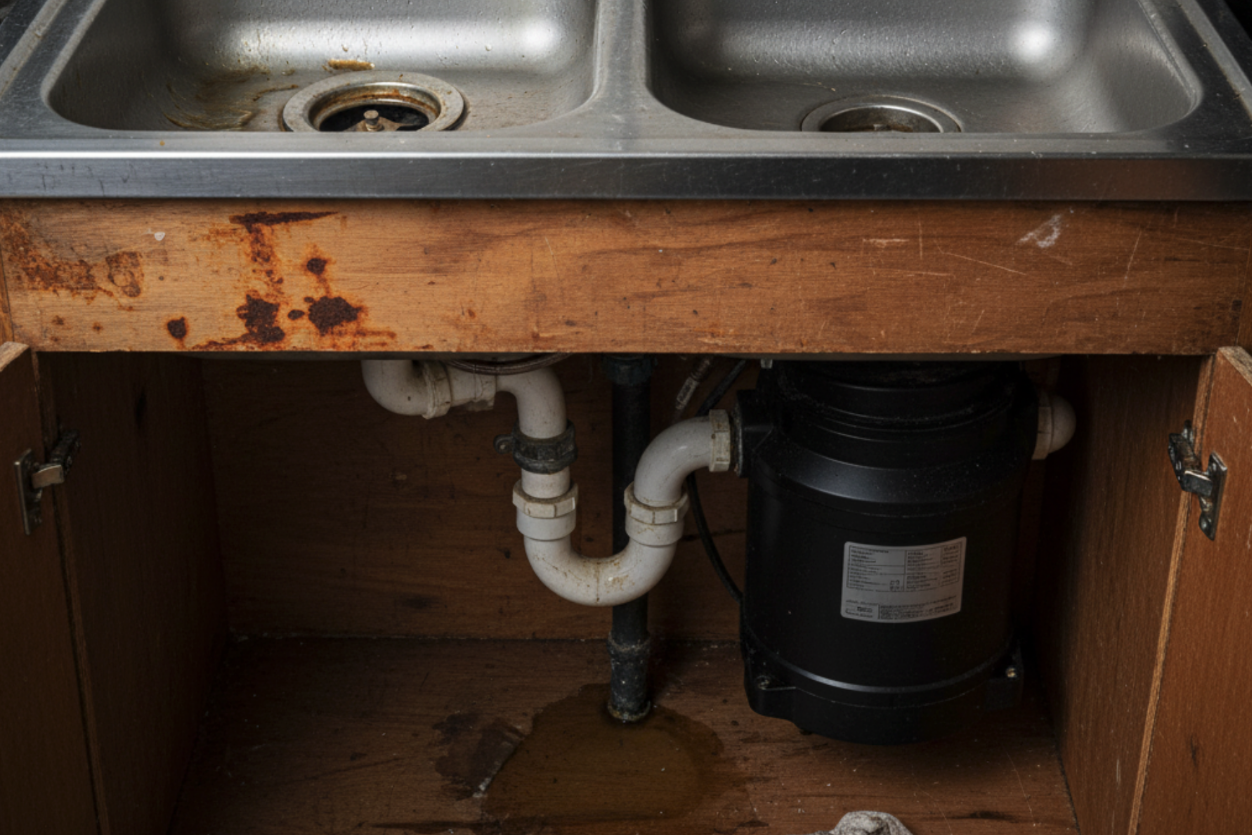
%204.svg)
%204.svg)
%204.svg)
%204.svg)
%204.svg)

The moment you install a sleek new sink, you have to decide what to do with that old workhorse underneath: your garbage disposal. The good news is that, in many cases, a functioning disposal can be detached from the old sink and reinstalled onto the new one. However, your sink replacement is the perfect time to evaluate the health and compatibility of your existing unit.
Here are the three key factors to consider before deciding to keep or toss your old disposal.
The main point of connection between the sink and the disposal is the drain opening, sealed by the mounting flange. Most disposals use a universal 3-bolt mounting system and a standard 3.5-inch drain opening.
The challenge arises with specialty sinks. Deep or thick materials like fireclay, cast iron, or some granite composites may require an extended flange that is either too long or too short for your existing disposal’s mounting hardware. If your current disposal is relatively new and in good shape, you may only need to purchase a compatible extended flange. However, if your unit is eight or more years old, this extra purchase might be better invested in a new, quieter, and more powerful disposal unit.
Since the disposal is already disconnected, you have a rare and perfect opportunity to inspect it without lying on your back in a cabinet.
Look for signs it needs replacement: if the unit is over 10 years old, if it has recently gotten significantly louder (indicating worn bearings), or if there is visible rust on the exterior or signs of persistent leaks from the housing. Labor is often the most expensive part of a plumbing job. If your disposal is nearing the end of its life, replacing it now prevents you from having to tear everything apart again in six months.
If you switch from a double-bowl sink to a large single-bowl, the plumbing configuration becomes simpler. The existing disposal will fit perfectly in the single drain hole. If you are getting a new double-bowl sink, and you decide to replace the disposal, ensure the new unit is installed on the deeper basin (if applicable) for better flow and reduced splashing.
The Pro Tip: Always use a fresh bead of 100% silicone sealant to mount the flange into the new sink basin. Never reuse old plumber's putty or sealant for this crucial step.